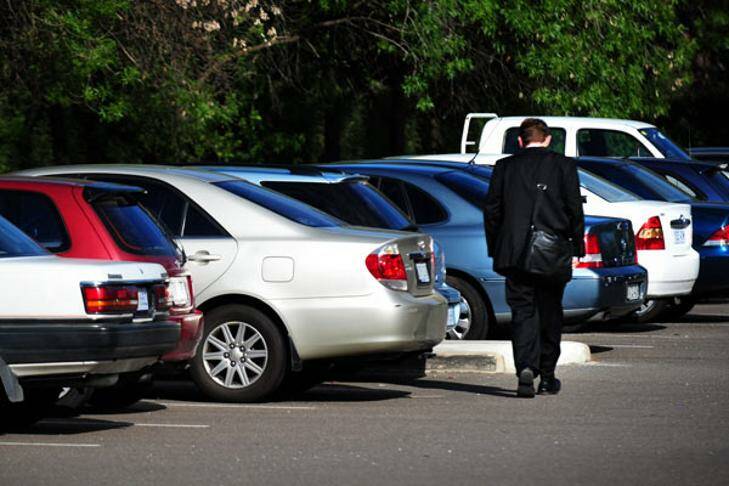The ACT Government's car parks are sitting on land valued at more than half a billion dollars.
Subscribe now for unlimited access.
$0/
(min cost $0)
or signup to continue reading
And while Canberra taxpayers spend about $5.4million a year maintaining them, the parking spaces will reap only $18.2 million in fees this financial year - net revenue of less than $5 a working day per bay.

The costs are a glimpse of the price Canberrans pay to have one of the world's highest ratios of parking spaces per worker.
The Government provided the latest estimates in response to questions from Greens transport spokeswoman Amanda Bresnan. Canberra's town centres contain about 10,950 ACT Government-owned parking spaces, excluding street-side bays.
In Civic, which has 4200 ACT-owned spaces, the value of land covered by each 37.5sqm bay is estimated to be about $92,820; in the other centres, a bay is worth about $17,700.
Each bay costs, on average, $489 a year to clean and repair.
Ms Bresnan said it was important the community was aware of these costs when it discussed parking policies.
''The value of the land is a factor, and it's been somewhat hidden from public debate.''
The Government's draft Transport for Canberra policy statement, a 20-year plan, outlines how it intends to use parking to encourage fewer people to drive to work.
Fewer car parks will be provided in dense areas, where there are more alternatives to driving, such as walking or buses.
The Government will also gradually increase parking fees until they match private-sector rates, and install technology that makes it easier for motorists to pay.
However, the number of parking spaces overall is expected to keep growing.
Ms Bresnan said the Greens agreed with much of the strategy, but noted that the Government had expressed similar ideas in the past without acting.
''We are falling behind what other cities are doing. There are great words and sentiments in the Transport for Canberra strategy, but we don't see that translating into what we actually do. It's all a bit haphazard at the moment.''
Chief Minister Katy Gallagher said car parks did ''come with costs and, whilst we would like to see continued increase in public transport, cycling and walking as a means of getting around the city, the reality remains that many people will still need to drive and they require parking''.
''Finding the right balance between increased public transport and adequate parking is a challenge which, in the short term, will be met with additional investment in both.''
However, the Property Council said cheap, subsidised public car parks were stymying local business opportunities.
Property Council ACT executive director Catherine Carter said the Government needed to provide more parking spaces but also increase the fees it charged.
''When the ACT Government charge prices that are not at a commercial level, it prevents potential commercial operators from supplying car parking into areas where it's needed, and those operators can't operate on a commercial basis,'' Ms Carter said.
She also criticised the failure to abolish free parking in the Parliamentary Triangle, which created ''an inequitable and unfair playing field''. ''It continues to produce knock-on effects in Civic and elsewhere. People park for free around Russell and Parkes, and then walk to Civic, displacing car parks for people who need them.''
Curtin University transport specialist Professor Peter Newman has previously described Civic as having more parking bays per worker than almost every central business district in the world.
ACT Planning and Land Authority research also found Civic's parking space to worker ratio, of about 84 spaces per 100 employees, is double that of Adelaide CBD's, more than three times Melbourne's, and almost four times Sydney's ratio.
This reporter is on Twitter: @markusmannheim

